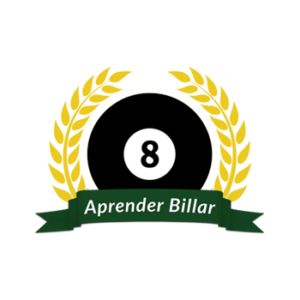

Chalk is the most important element in billiards, which allows us to have a perfect grip between the tip of the cue stick and the cue ball.
But if we do not put chalk, when we make the shot with effect or a strong shot, the blunder will occur.
The malfunction also occurs when the sole is very worn out, in that case you should replace it with a new one.
The soles come with different grades from very soft to very hard, which means that it can retain more or less chalk, the softer the tip, the more chalk it retains and vice versa.
Chalk is applied to the tip of the cue, ideally before each shot, to increase the coefficient of friction of the tip so that when it hits the cue ball on an off-center shot, no miscue occurs.
It is that sharp sound that the tip of your cue makes when it loses contact with the cue ball during impact, the ball goes out of the shooting line, it is produced by not applying chalk to the cue.
It is an involuntary slip between the tip of the cue and the struck ball.
Yes you can, in fact a billiard school in Germany teaches you to play without chalk, only hitting the cue ball in the center.
Their style of play is to just hit the cue ball in the center and that way control where you want it to go for the next ball.
It is the only way to play without chalk.
When you want to apply spin there will be a miss because your cue stick has no chalk.
Without a doubt and after reviewing hundreds of opinions of professional players, they say that the best billiard chalk is Blue Diamond.
Personally I use the Glygen Sniper.
It is made of silica and aloxite, which hardly gives off any dust and allows players to apply more effects.
You must pass the chalk on the tip of the cue or sole, two or three times without blowing afterwards, since with the tip you will make direct contact with the ball and you will be able to give it more effect, without misses.
It is to place your chalk without losing it, without someone else taking it from you, for convenience instead of going all over the table to get it, you have it next to you, it works with a magnet and thus avoid dirtying your pocket.
These objects are to hit the tip of the cue with these nails that will help you to better penetrate the billiard chalk, sometimes the chalk is not impregnated in the cue because it is missing that you push it or maybe it is the sole that no longer works.
In that case, the sole would have to be replaced.

Therefore this chalk is as we spoke before, apply less chalk and last longer hitting and gives more effect to the cue ball.




We asked a question and the chalks preferred by the majority + their specifications:



It does not make a mess, does not leave marks on the balls, does not leave marks on the cloth, does not leave a lot of residue on the players’ hands and is Shaun Murphy’s favorite chalk.






Some tips:
The two people who invented it over a century ago were William A. Spinks and William Hoskins who began mixing a base of silica and alloxite, thus producing the best chalk.
Which you too can begin to carefully mix your own formula with the chalk elements mentioned above.
And it is very likely that you will have a great product that we can use in the future.
How to make homemade billiard chalk?
I don’t guarantee it will work, if it worked for you, leave a comment.
To keep your chalk in your pocket or place a magnet on it so that you can access it at any time.
The answers vary from player to player as to how often to chalk the cue, but a good rule to follow is to chalk before every shot, if not every other shot.
If a shot requires additional spin on the ball, shoring is advised because it will provide additional friction during impact.
In addition, it also depends on the brand of your billiard chalk, the low end ones like the Master brand should be chalk every shot, however, the mid and high end ones, according to the manufacturer, you can average 10 shots without chalk.
You should always choose a chalk color that is the same color as the pool table mat or cloth to avoid soiling it or leaving chalk marks on the table.
Blue is recommended for most tournaments as it allows the referee and players to see the marks on the cue ball. The marks can be easily cleaned.